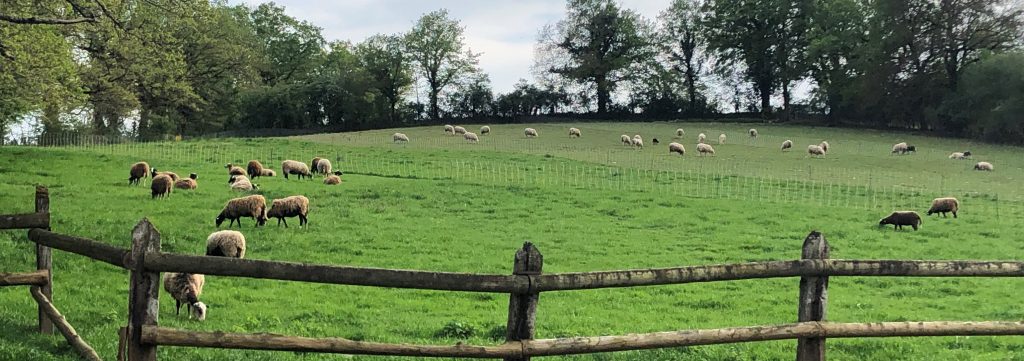
Mission statement
- At Farmlands, our objective is to provide quality lamb and mutton meat, at an affordable price, while generating a decent income for the farmer.
- While consumers should be able to have better information on the products they are consuming; farmers should be able to live properly from their work.
- By utilizing, at best, the natural landscape available in Auvergne and breeding animals with their traditional instinct; we are in position to meet our objective in a sustainable environment.
Grass-fed lambs

- Most of the lamb meat produced in France is grain-based (e.g. corn, soy, by products) and feedlot practices of confinement.
- Farmlands’ lamb is raised outdoors with naturally diversified diet such as forage grass, pasture, range, browse and hay.
- Supplemental feeding can be provided during times when forage options are limited (e.g. drought) or when there is a high nutrition need (e.g. lactation) in a very small proportion.
- However, grains cannot provide the nutrient spectrum of a green leaf.
- Therefore, grass-fed lambs have much higher levels of vitamins and many other nutrients than their grain-fed counterparts.
- According to studies performed in the USA, Grass-fed lambs in pasture generally have 14 % less fat and about 8 % more protein compared to grain-fed lambs.

Did you know?
Lamb meat is healthy!
Grass-fed lamb is an excellent source of vitamin B-12, niacin, zinc, and a good source of iron
Grass-fed lamb has one of the highest levels of conjugated linoleic acid (CLA) and omega-3
Contrary to common believes, once the fat is trimmed from the lamb, it is left with less fat than a similar portion of chicken (such as a drumstick) without skin
Nature's health program

Mass treatment is against our principles. At Farmlands, breeding good and healthy animals relies on:
- No scheduled preventative health program: animals are only treated on a case-to-case basis and only if required
- Natural ailments are reduced by identifying and establishing plants with elements necessary for maintaining animals’ good condition
- Elimination of hereditary disease is achieved by generational selection
An environmentally friendly farming concept

Sustainable agriculture is based on a long-term resource management system.
- The right combination or plants and animals is crucial to avoid damages such as erosion, structural changes, hydrology and compaction.
- Our farming system is based on providing our herd of sheep with diversified feeding: grass, trees leaves, bushes etc. While benefiting of nutritional feeding, the sheep maintain and improve the biodiversity of the soil.
- Controlled grazing of pastures allows to achieve maximum economic productivity, while preserving biodiversity of the soil, plant, water and animal habitat.
Did you know?
Lamb meat is an ethical product!
Humans need to obtain all nutrients essential for growth and survival from the food they consume.
For example, a 75kg male needs a daily average of 50g of protein per day.
- 50g dietary protein coming from meat: about 2kg of CO2 generated
- 50g dietary protein coming from apples: about 4,5kg of CO2 so more than double the amount of carbon emissions.
A study conducted in France found that when fruits and vegetables with a similar energy content as meat were used as a substitute, it either had no effect or increased the emission of greenhouse gases.
Contact : admin@farmlands.fr